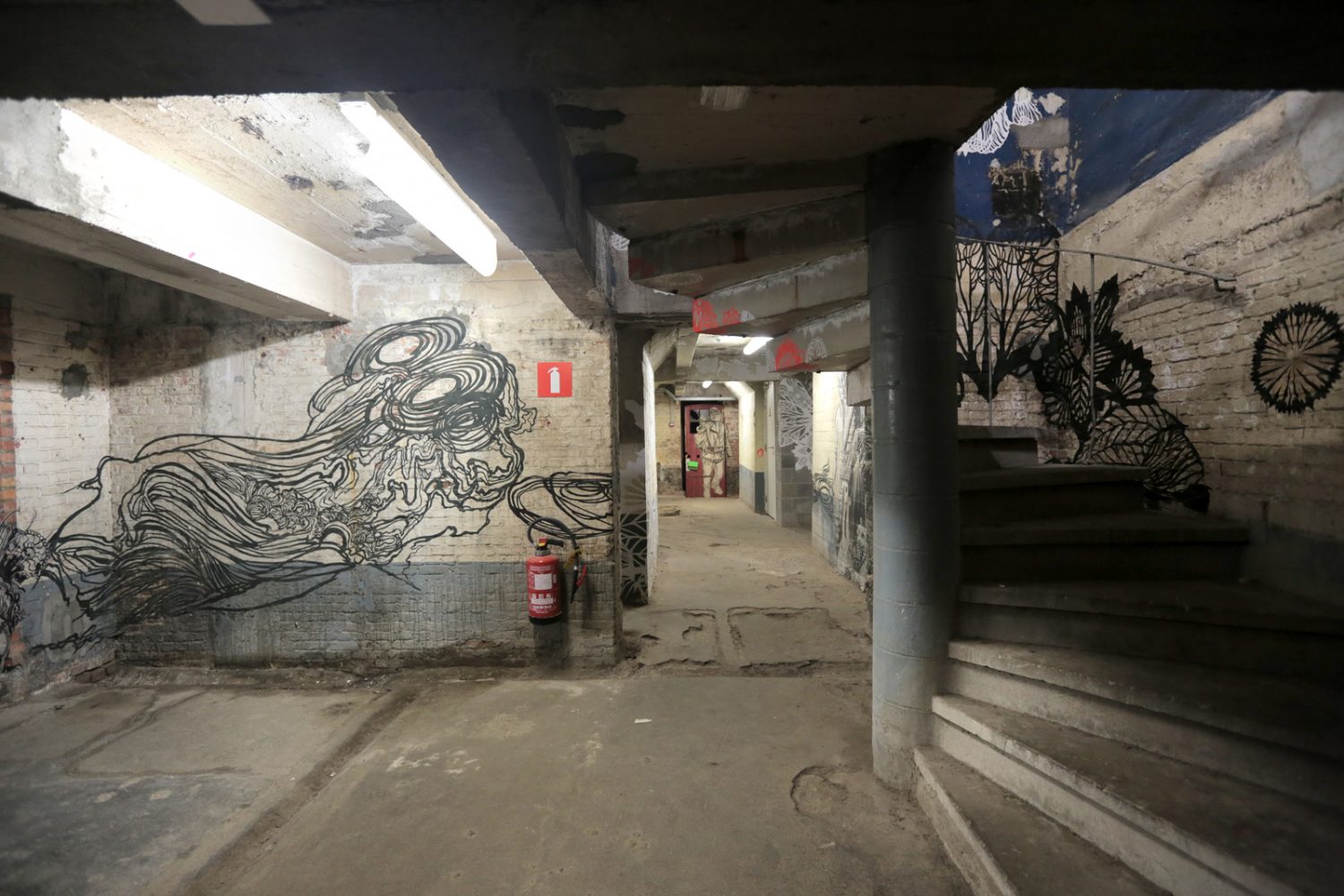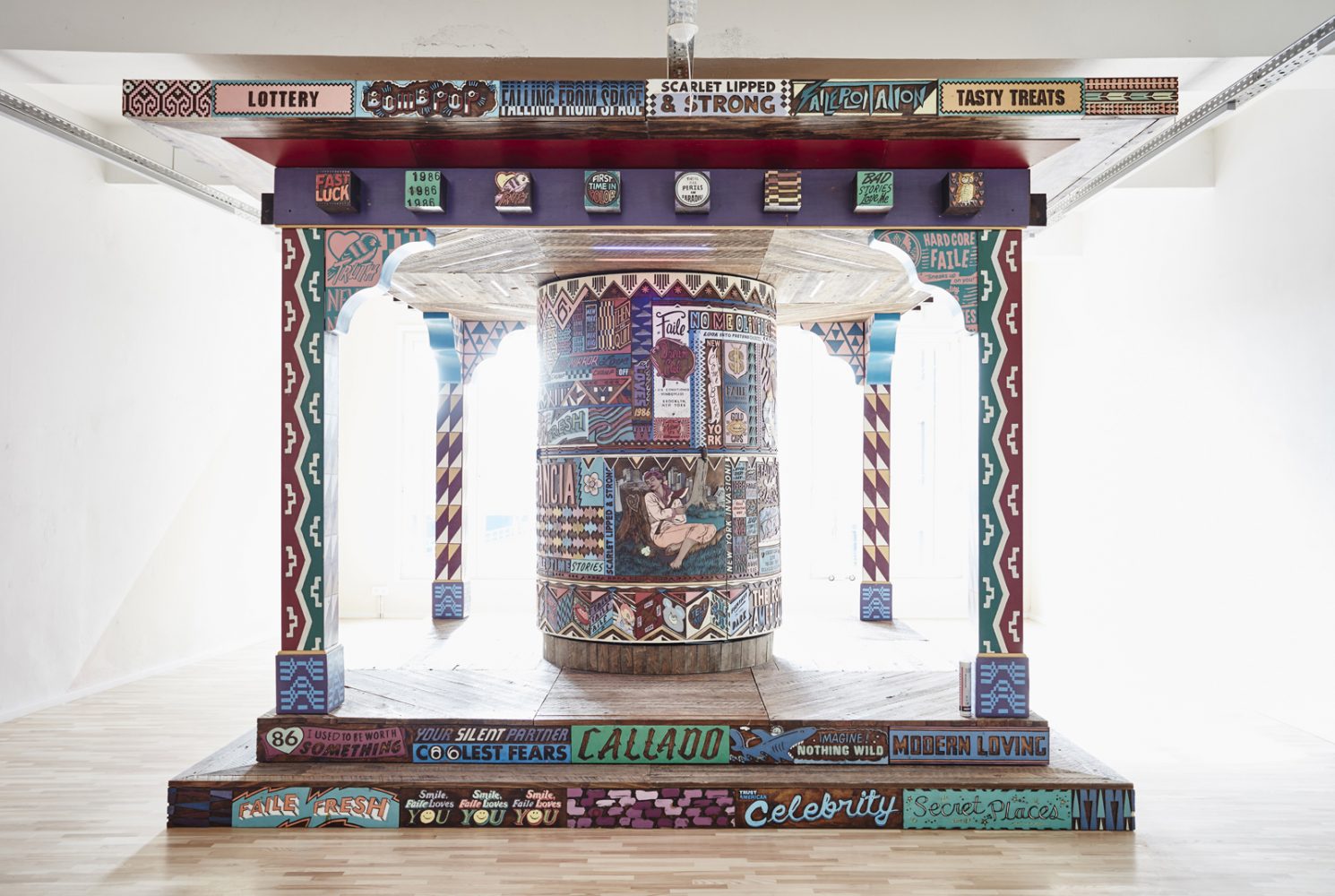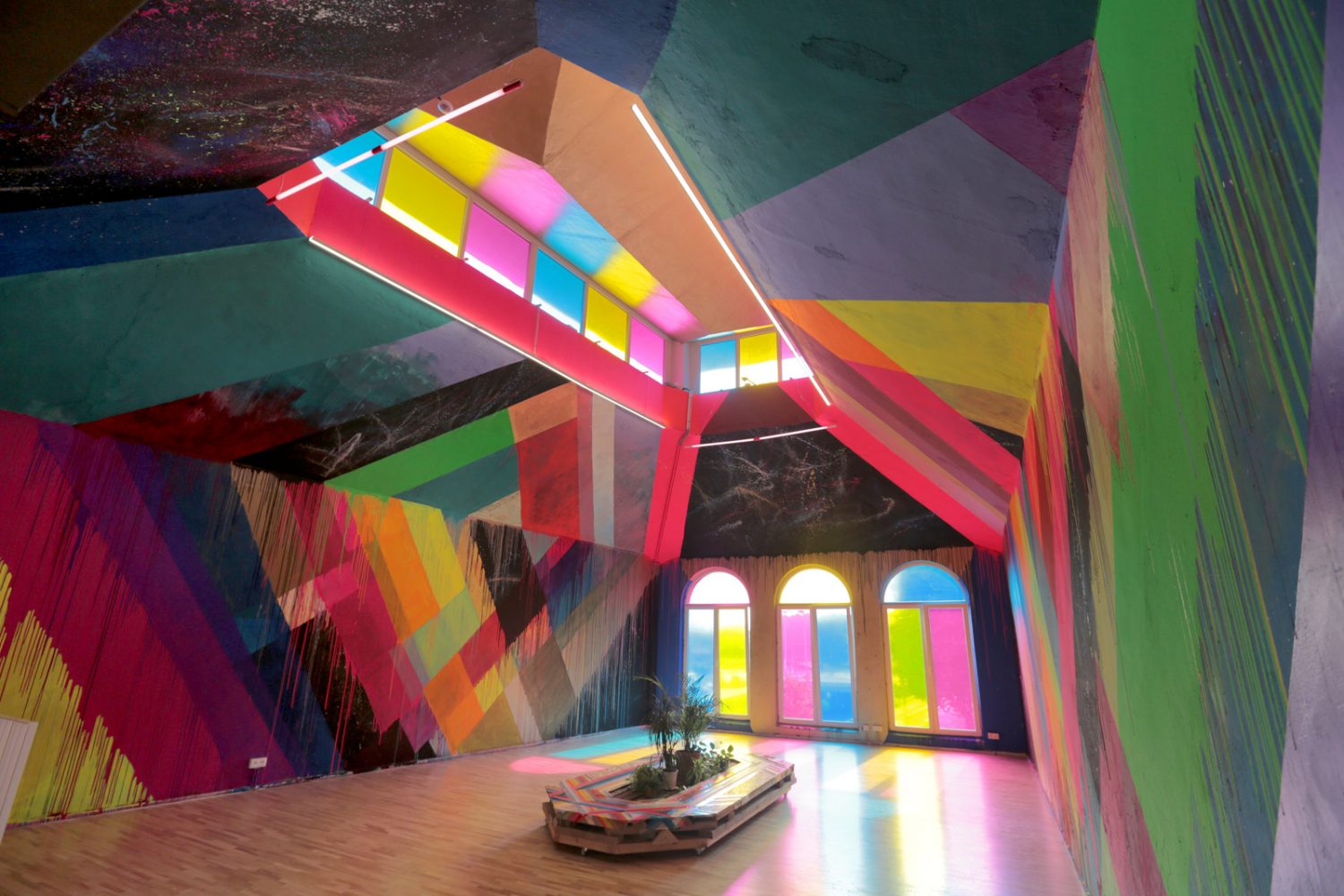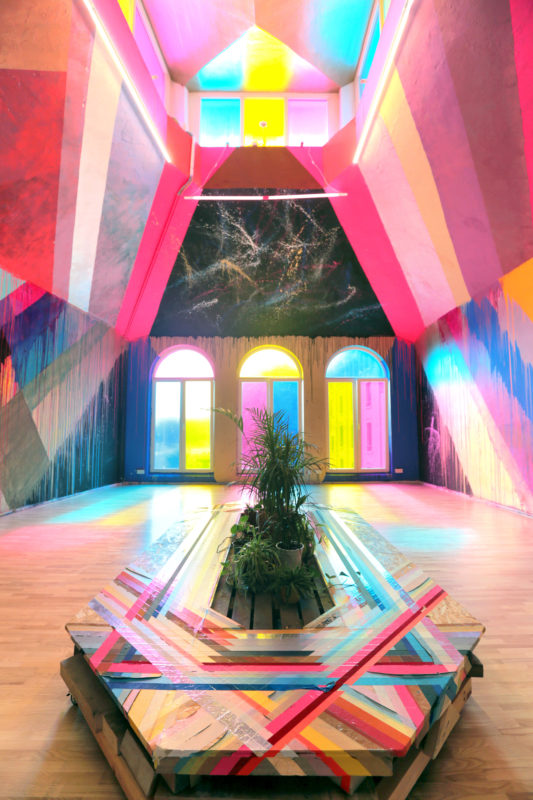City Lights
Maya Hayuk, Swoon, MOMO, FAILE
As the museum’s inaugural exhibition, CITY LIGHTS also serves as a manifesto for MIMA as a whole. Meeting for the first time in a European institution, Swoon, Maya Hayuk, MOMO and the artistic duo FAILE offer a multi-dimensional view of culture 2.0- the cosmopolitan spirit of our museum.
The title of the exhibition, which takes its name from the 1931 Chaplin film, is a fitting metaphor for the lives of the exhibiting artists. Through their art, they’ve managed to create an identity and space that is theirs alone- illuminating the streets with their playful visual language, they communicate with their audience in an empathic, collaborative and direct way.
C I T Y L I G H T S begins by taking the visitor on an initial descent into the museum’s foundations to confront the work of American artist Swoon. Her work fits the space perfectly, a dissemination of materials piercing the depths of darkness. Composed of carefully cut out paper, stuck straight onto the walls, Swoon’s fragile patterns and characters contrast heavily with the roughness of the surfaces they’re affixed to. In time mould gradually corrupts the paper, poetically echoing the ephemeral nature of the work. The delicate facial expressions morph into ambassadors of Swoon’s humanitarian projects. On leaving one’s senses are heightened and we are left with the sense we have emerged from an almost spiritual existence.
The individual stairs, plastered with billboard posters, announce ‘Wishing On You ’, the monumental sculpture by FAILE, and the two large paintings framing it. A wooden framed temple encases an imposing stone wheel which is engraved across its surface with colourful motifs dedicated to consumerism. The faithful visitor turns the wheel in order to make a wish. This artistic cultism pays homage to the graphic heritage of the US and denounces its commercial reappropriation. This dichotomy of simultaneously celebrating and critiquing commercialisation becomes in turn a critique of the cultural industries themselves. FAILE responded to the ‘sanctifiation’ of his work in the museum by stencilling a biblical quote on the walls of the MIMA toilets: ‘vanitas vanitatum omnia vanitas’ (vanity of vanities, all is vanity). A phrase that fittingly had been appropriated by the Flemish masters centuries earlier.
The installation by the artist MOMO is grandiose and yet maintains an intimacy. The wooden spiral – 3 metres high- perfectly balanced which stands before the backdrop of a giant mural painting, reinforces the monumental scale of his work. In stark contrast to the precision of the main piece, the artist also reveals what’s happening ‘backstage’. With a certain negligence he has positioned a number of sculptures behind a temporary plaster wallan accompanying video demonstrates the technique he has employed to determine the final aesthetics of the mural, which we discover is based on practical geometry. Elsewhere we encounter hidden preparatory drawings heaped together in ignominious bulk. This didactic and narrative ‘staging‘ of his work, breaks down barriers between the viewer and the work. This strategy offers us access to the artist’s point of view and an insight into his aesthetics as defined by a purified geometry.
As we penetrate the chapel, the work by Maya Hayuk situated on the second floor, provokes an audible WOW from the visitor! Bright, luminescent colours fill up the space and we find ourselves immersed in an abstract and vibrant universe, matching in perfect harmony with the insolent architecture of the museum. Large coloured bands echo the structure of the room. The walls, cloaked in great stretches of paint vibrate with indeterminate drips which provide balance to the geometrical compositions and mingle the colours. The numerous layers of paint which were applied during the several weeks preceding the exhibition, shine on the surface bringing the walls to life. Here, painting and architecture achieve symbiosis to the beat of a tribal rhythm.
A good novel allows the reader to travel through different universes whilst still following a strong narrative. The same is true of CITY LIGHTS. When Alice van den Abeele first laid eyes on the MIMA ‘chapel’ in its then state of ruin, she immediately thought of inviting Maya for its inaugural exhibition- from there onward other names followed. Rather than curate ‘City Lights’ using established criteria such as picking artists with complimentary styles or those who had similar levels of international recognition, Alice decided to unite a group of artists whose collaboration would be centred around their friendship and camaraderie. This was the motivation that encouraged Swoon, MOMO and FAILE to join the project. One could easily think that the individual merits of the artists would be sufficient to ensure the success of the exhibition, but this would be a mistake. As with music, the sense of cohesion and added value that springs from a group such as this, makes all the difference. Putting the humanistic value at the heart of CITY LIGHTS was a brilliant piece of intuition and now underpins MIMA’s ethos as a whole.
Curated by
Alice van den Abeele & Raphaël Cruyt




















